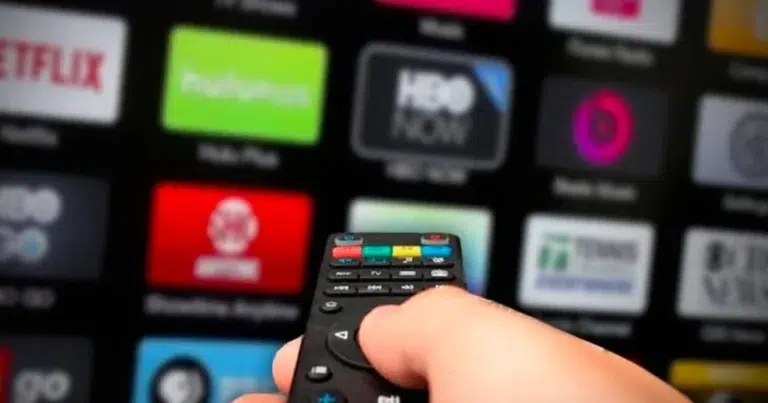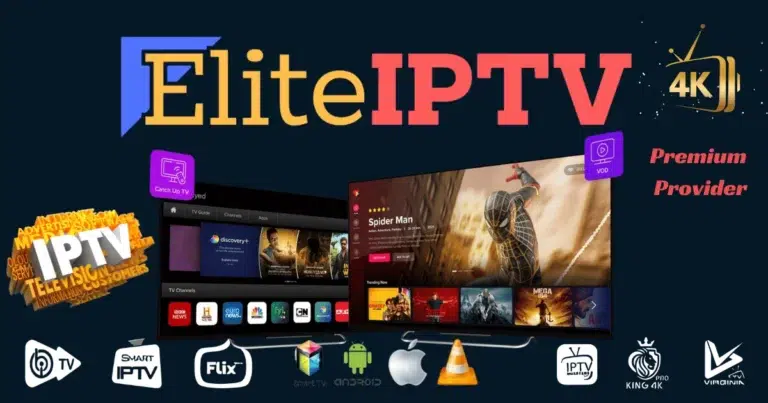In recent years, Internet Protocol Television (IPTV) has emerged as a groundbreaking technology, revolutionizing how people consume entertainment content. This article delves into the intricacies of IPTV subscription, exploring its types, benefits, challenges, and future prospects.
Define IPTV Subscription
IPTV subscription refers to the delivery of television content over Internet Protocol (IP) networks. Unlike traditional methods like cable or satellite, IPTV utilizes internet connectivity to transmit TV programs to users’ devices.
Relevance and Importance
With the increasing prevalence of high-speed internet and the growing demand for on-demand and personalized content, IPTV has become a viable alternative to traditional TV services. It offers a wide range of channels, including live TV, on-demand videos, and interactive features, catering to diverse viewer preferences.
Types and Categories
IPTV subscription come in various forms, catering to different user needs and preferences.
Live TV Streaming
One of the most popular types of IPTV subscription is live TV streaming, where users can access real-time television broadcasts over the internet. Services like Hulu + Live TV, Sling TV, and YouTube TV offer a wide selection of channels, including sports, news, and entertainment.
Video on Demand (VOD)
VOD services allow users to stream or download content at their convenience. Platforms like Netflix, Amazon Prime Video, and Disney+ offer extensive libraries of movies, TV shows, and original programming, giving users the flexibility to watch what they want, when they want.
Catch-Up TV
Catch-up TV services enable users to watch previously aired programs on-demand. Providers like BBC iPlayer, ITV Hub, and NBC offer catch-up services, allowing viewers to catch up on missed episodes or revisit their favorite shows.
Interactive TV
Interactive TV services enhance the viewing experience by offering interactive features such as on-screen menus, interactive advertisements, and social media integration. Platforms like AT&T U-verse and Verizon Fios provide interactive TV features, allowing users to engage with content in innovative ways.
Symptoms and Signs
Buffering and Lag
One common symptom of IPTV subscription issues is buffering or lag during streaming. This can occur due to slow internet connections, network congestion, or insufficient bandwidth.
Poor Picture Quality
Another sign of IPTV problems is poor picture quality, including pixelation, artifacts, or blurry images. This can be caused by network issues, server problems, or insufficient video compression.
Channel Blackouts
Some IPTV services may experience channel blackouts or outages, where certain channels become unavailable for streaming. This could be due to licensing issues, technical glitches, or maintenance downtime.
Limited Device Compatibility
Certain IPTV services may have limited device compatibility, restricting users to specific platforms or devices. This can be frustrating for users who want to access content on multiple devices or operating systems.
Causes and Risk Factors
Network Congestion
One of the primary causes of IPTV issues is network congestion, where high volumes of data traffic overload the network infrastructure. This can result in slower speeds, buffering, and interruptions in service.
Server Overload
Another common cause of IPTV problems is server overload, where a high number of simultaneous connections exceed the server’s capacity. This can lead to performance issues, including buffering, freezing, and downtime.
Bandwidth Limitations
Bandwidth limitations imposed by internet service providers (ISPs) can also impact IPTV performance. If users exceed their data caps or experience throttling during peak hours, it can affect streaming quality and reliability.
Hardware Limitations
In some cases, hardware limitations such as outdated routers, modems, or devices can contribute to IPTV issues. Older equipment may struggle to handle high-definition streams or maintain stable connections, leading to subpar viewing experiences.
Diagnosis and Tests
Network Speed Test
One way to diagnose IPTV issues is to conduct a network speed test to assess the speed and stability of the internet connection. Various online tools and apps can measure download/upload speeds, latency, and packet loss, helping users identify potential network problems.
Ping Test
A ping test measures the round-trip time it takes for data packets to travel from the user’s device to a specific server and back. High ping times or packet loss can indicate network congestion or connectivity issues, affecting IPTV performance.
Trace Route Analysis
Trace route analysis traces the path that data packets take from the user’s device to the IPTV server, identifying any network hops or bottlenecks along the way. This can help pinpoint where in the network the issue is occurring, facilitating troubleshooting and resolution.
Device Compatibility Check
Users should also ensure that their devices are compatible with the IPTV subscription service they’re using. Checking for firmware updates, app compatibility, and system requirements can help prevent compatibility issues and ensure smooth streaming experiences.
Treatment Options
Troubleshooting Steps
For minor IPTV issues such as buffering or poor picture quality, users can try troubleshooting steps to improve performance. This may include restarting the device, clearing cache and cookies, or switching to a wired internet connection for better stability.
Network Optimization
Optimizing the home network can also enhance IPTV performance. This may involve upgrading to a higher-speed internet plan, using a wired connection instead of Wi-Fi, or prioritizing IPTV traffic through quality of service (QoS) settings on the router.
Service Provider Assistance
If troubleshooting steps fail to resolve the issue, users can seek assistance from their IPTV service provider. Customer support representatives can offer guidance, troubleshoot technical issues, and escalate problems to the appropriate teams for resolution.
Hardware Upgrades
In some cases, upgrading hardware components such as routers, modems, or streaming devices may be necessary to improve IPTV performance. Investing in newer, more powerful equipment can ensure smoother streaming experiences and better compatibility with IPTV services.
Preventive Measures
Regular Speed Tests
To prevent IPTV issues, users should perform regular speed tests to monitor the performance of their internet connection. This can help identify any changes or fluctuations in speed, allowing users to take proactive measures to address potential problems.
Network Monitoring
Monitoring network traffic and performance can also help prevent IPTV issues. Using network monitoring tools or apps, users can track bandwidth usage, identify congestion points, and optimize network settings for better IPTV performance.
Firmware Updates
Keeping devices and networking equipment up to date with the latest firmware updates is essential for maintaining optimal IPTV performance. Firmware updates often include bug fixes, security patches, and performance enhancements that can improve stability and reliability.
Quality Router Placement
Proper placement of the router can significantly impact Wi-Fi coverage and signal strength, affecting IPTV streaming quality. Users should place the router in a central location away from obstructions and interference sources for optimal coverage and performance.
Personal Stories or Case Studies
Sarah’s Streaming Woes
Sarah, a busy professional, loves unwinding after work by streaming her favorite TV shows and movies. However, she often experienced buffering and lag issues with her IPTV service, disrupting her viewing experience.
John’s Network Upgrade
John, a tech enthusiast, decided to upgrade his home network to improve IPTV performance. By investing in a high-speed internet plan and upgrading his router to






